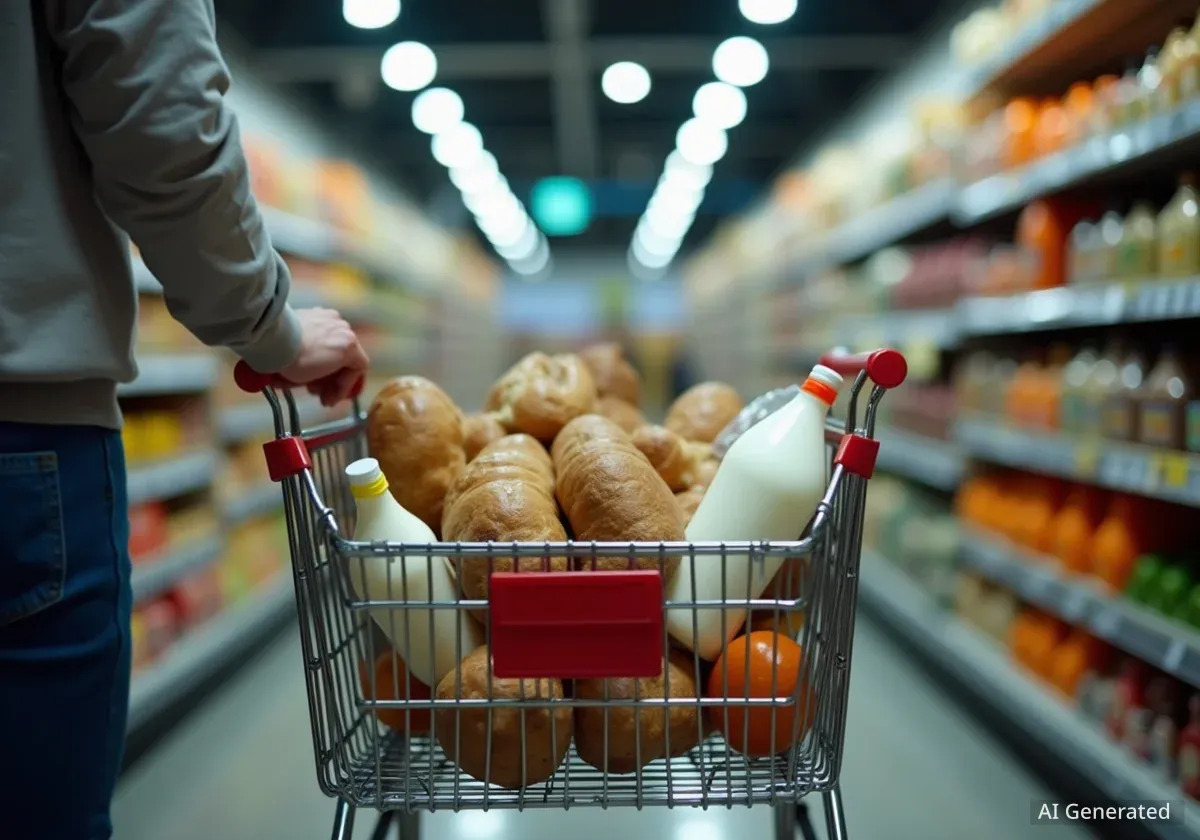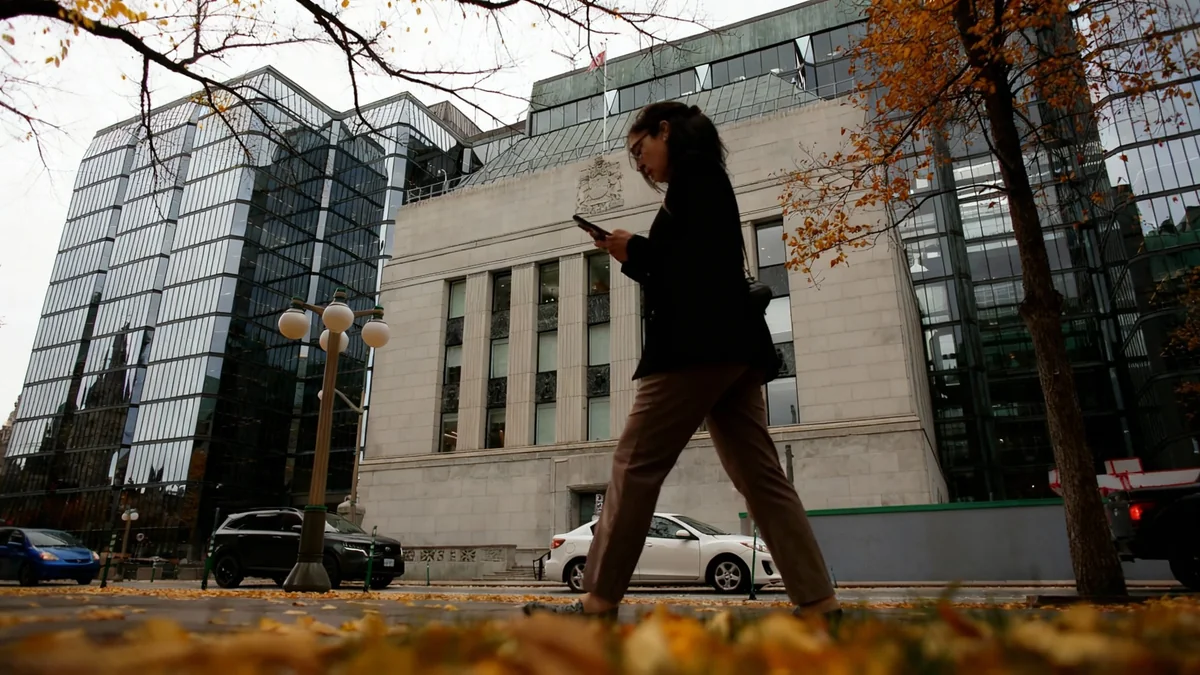Recent economic data indicates a noticeable slowdown in U.S. consumer spending, a direct consequence of persistent inflation that continues to outpace wage growth. American households are increasingly altering their purchasing habits, cutting back on non-essential items and dipping into savings to cover the rising cost of necessities like food, housing, and transportation.
This shift in consumer behavior is sending ripples through the economy, raising concerns about future growth prospects. As personal savings rates fall to multi-year lows and credit card debt climbs, the financial resilience of the average American household is being put to the test.
Key Takeaways
- Consumer spending is slowing as high prices for essential goods strain household finances.
- The national personal savings rate has dropped significantly as people use savings to pay for daily expenses.
- Credit card debt has reached a record high, indicating that many are borrowing to manage costs.
- Spending is shifting away from discretionary goods and services towards essential items.
Inflation's Lingering Effects on Household Budgets
Despite efforts to control rising prices, inflation remains a significant challenge for the U.S. economy. According to the latest Consumer Price Index (CPI) report from the Bureau of Labor Statistics, the cost of living has remained stubbornly high, particularly in key areas that form the bedrock of household budgets.
Core expenses such as groceries, rent, and gasoline have seen substantial price increases over the past year. These are not optional purchases, meaning families have little choice but to absorb the higher costs. This has led to a phenomenon known as 'trading down', where consumers opt for cheaper store brands or visit discount retailers more frequently.
Understanding the Federal Reserve's Goal
The U.S. Federal Reserve aims for an annual inflation rate of 2%. This level is considered optimal for maintaining stable prices while encouraging economic growth. Current inflation levels remain above this target, prompting the central bank to maintain a cautious monetary policy stance.
The sustained pressure on budgets means less money is available for other things. Discretionary spending, which includes items like dining out, entertainment, and travel, has seen the most significant pullback. This trend directly impacts the service and hospitality industries, which were still recovering from previous economic disruptions.
A Shift in Consumer Behavior
The financial pressure is forcing a clear and measurable change in how Americans spend their money. Retail sales data shows a distinct pivot from wants to needs. While spending on groceries and healthcare remains stable or has slightly increased due to higher prices, sales of electronics, furniture, and apparel have declined.
This behavioral shift is creating winners and losers in the retail sector. Discount chains and wholesale clubs are reporting stronger sales figures, as shoppers prioritize value. In contrast, mid-tier and high-end retailers are facing weaker demand as their customer base becomes more price-sensitive.
"We are observing a fundamental realignment of consumer priorities. The focus has shifted from aspiration to affordability. Households are making tough decisions every day, cutting back on small luxuries to ensure they can afford the essentials." - Economic Analyst, Center for Economic Policy.
This trend is also visible in the types of products being purchased. For example, sales of private-label or store-brand grocery items have surged by over 15% in the last quarter, according to market research firm NielsenIQ. This indicates a widespread effort to reduce food bills without significantly changing dietary habits.
The Decline of Discretionary Spending
The impact is most visible in sectors that rely on discretionary income. Many households are making difficult choices to manage their finances, which often involves reducing or eliminating certain expenditures. Key areas affected include:
- Dining Out: Restaurant traffic has slowed, with more people choosing to cook at home to save money.
- Travel and Leisure: Vacation plans are being scaled back or postponed, with a preference for more affordable, local travel options.
- Subscriptions and Entertainment: Families are re-evaluating their monthly subscriptions for streaming services and other digital entertainment.
- Big-Ticket Items: Purchases of new cars, home appliances, and furniture are being delayed due to both high prices and economic uncertainty.
The Depletion of Personal Savings
One of the most concerning trends is the rapid decline in the personal savings rate. During the early stages of the pandemic, government stimulus and reduced spending opportunities led to a significant increase in household savings. Many families built up a financial cushion that helped them navigate the initial phase of inflation.
However, that buffer is now largely gone. The personal savings rate, which measures the percentage of disposable income that people save, has fallen to one of its lowest levels in over a decade. According to the U.S. Bureau of Economic Analysis, the rate is now hovering around 3.5%, a stark contrast to the double-digit figures seen in 2020 and 2021.
This depletion of savings means that many families have less capacity to handle unexpected expenses, such as a medical bill or car repair. It leaves them more financially vulnerable and reliant on other means to bridge the gap.
Record-High Credit Card Debt
According to the Federal Reserve Bank of New York, total U.S. credit card debt recently surpassed $1.1 trillion for the first time. This record figure highlights the increasing reliance on credit to cover everyday expenses.
Rising Debt and Financial Strain
With savings dwindling, a growing number of Americans are turning to credit to make ends meet. The surge in credit card balances is a clear indicator of this trend. While credit can be a useful tool, relying on it for non-discretionary spending can lead to a cycle of debt that is difficult to break, especially with interest rates at multi-decade highs.
The increase in debt is not limited to credit cards. Delinquency rates for auto loans and other forms of personal credit have also started to tick upward, signaling that financial strain is becoming more widespread.
This rising indebtedness poses a risk to the broader economy. If a large number of consumers are unable to manage their debt payments, it could lead to an increase in defaults, which would negatively impact the financial sector and could further slow economic activity.
Economic Outlook and Policy Implications
The slowdown in consumer spending has significant implications for the U.S. economy, as it accounts for roughly 70% of all economic activity. A sustained pullback in spending could lead to slower GDP growth and potentially increase the risk of a recession.
Policymakers at the Federal Reserve are watching these trends closely. Their primary goal is to bring inflation back down to the 2% target without causing a severe economic downturn. The cooling of consumer demand is a sign that their interest rate policies are having an effect, but they must navigate carefully to avoid tightening financial conditions too much.
For the foreseeable future, American consumers will likely continue to face a challenging economic environment. The ability of households to adapt to these pressures will be a key determinant of the economy's path forward.





